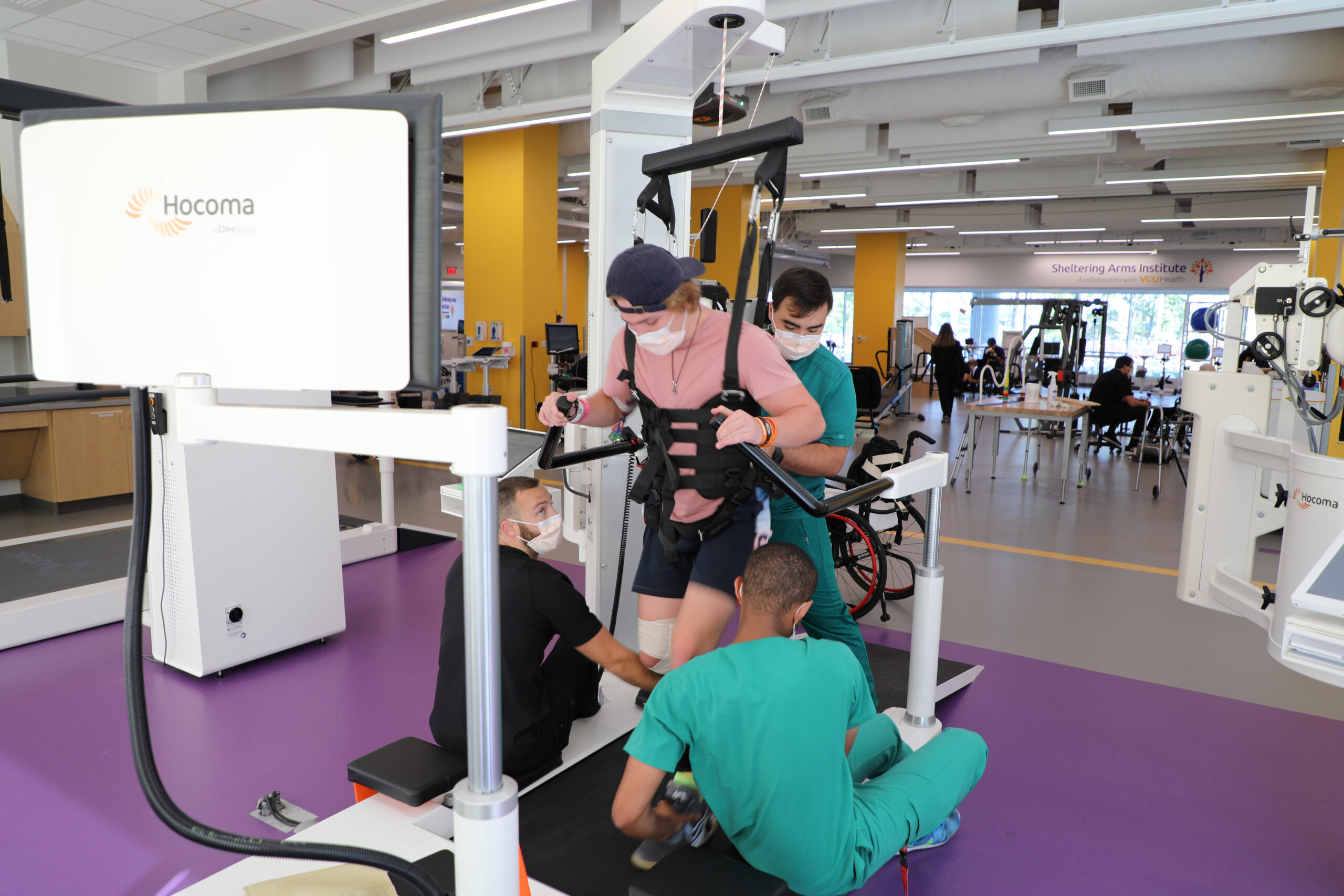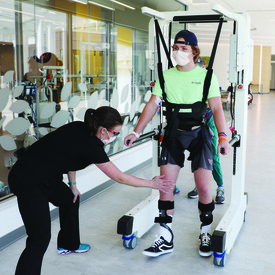Seventeen-year-old Roanoke native Jordan Gillespie was enjoying summer vacation with his family when he noticed a bump under his arm. His doctor determined that the bump was from a spider bite and sent him home with antibiotics. About a week later, he began experiencing back pain that progressively became more severe. “I had to get carried out of my house on a stretcher because I was paralyzed at that point,” Jordan recalls.
Further tests revealed that the spider bite—from a brown recluse—caused a Methicillin-resistant Staphylococcus aureus (MRSA) infection in Jordan’s blood stream that attacked his spinal cord He underwent spinal surgery at VCU Medical Center and was diagnosed with a T3 spinal cord injury, meaning he had no feeling from the ribs down. “The doctor told me I had a 20 percent chance to ever walk again. At that point, I put my head down,” Jordan said remembering the moment when he received the devastating news.
The Gillespie family decided on Sheltering Arms Institute for Jordan’s next step after conducting research on the best facilities, programs, and technologies for spinal cord injury recovery.

“Just hearing the name rehab, I thought it was going to be miserable, but I came here, and it brought my spirits up knowing how fun they are and how much they’re willing to work with me and help me achieve my goals.”
During his first few days at the Institute, Jordan began to stand, take steps, and practice home care tasks such as transferring, showering, and getting dressed on his own. His therapy team utilized myriad state-of-the-art technologies throughout his five-week stay, including the EksoNR robotic exoskeleton as well as Hocoma’s Andago and Lokomat. “I used to run a lot, and they actually put a soccer ball in front of my feet, and I ended up kicking it,” Jordan said with a smile about his customized therapy.
In just a few weeks, Jordan progressed significantly. Upon discharge, he continued outpatient therapy at home and returned to school. He’s gearing up for his senior year of high school and hopes his story inspires others who may be going through a difficult time: “Just keep smiling and keep going. Keep your head high.”
This story was originally published by Sheltering Arms Institute. Edits and additions have been made for clarity and style. All media are credited to SAI.

